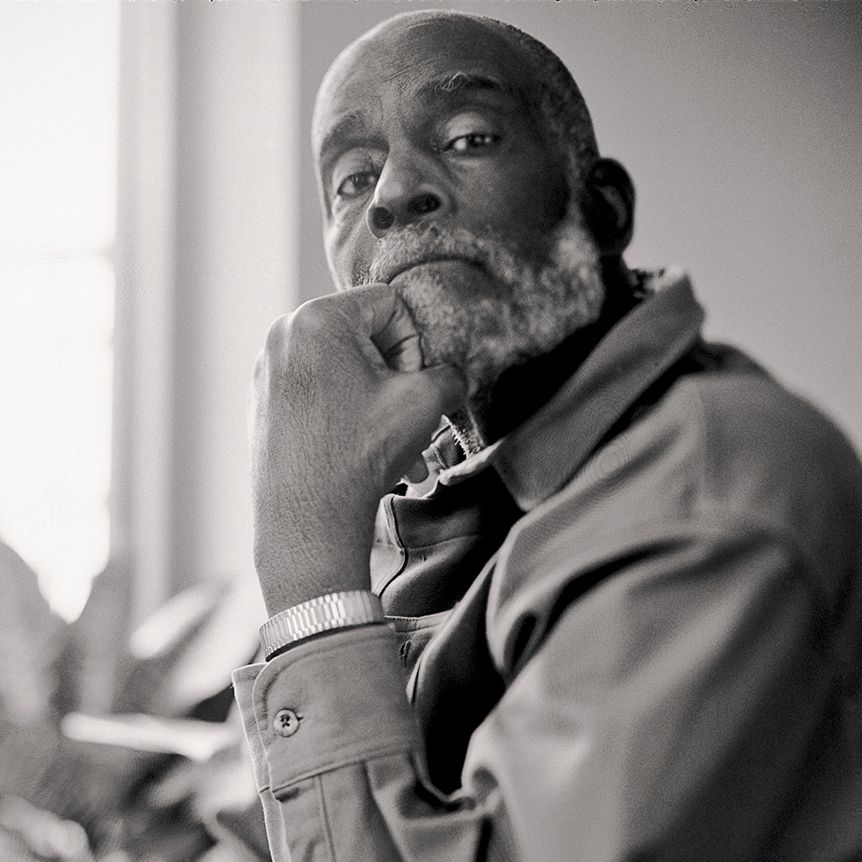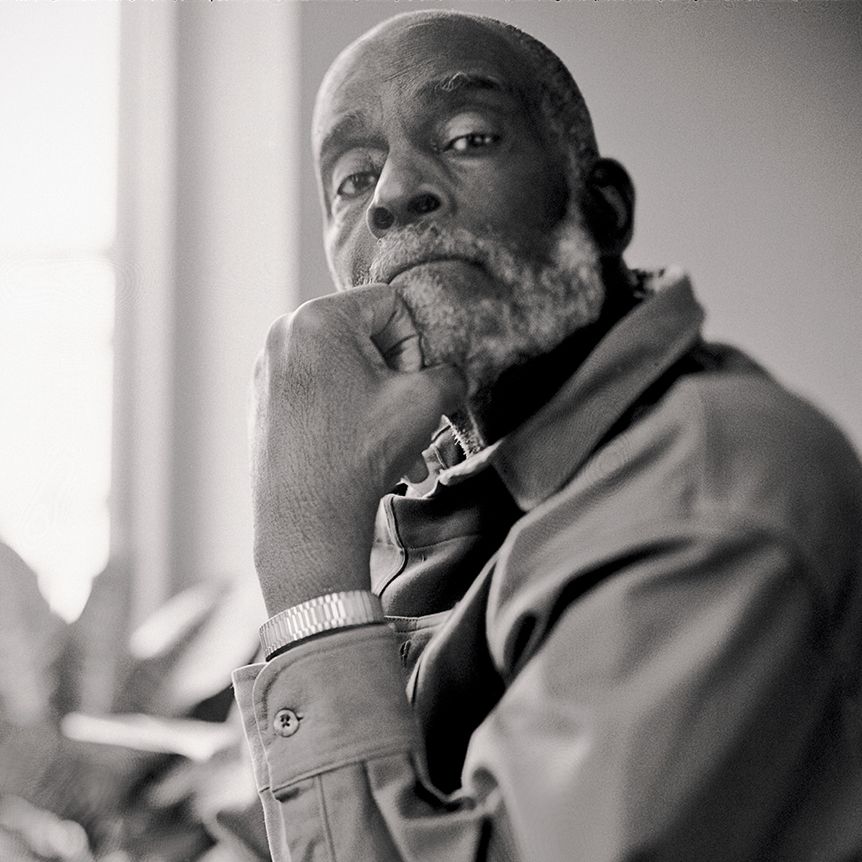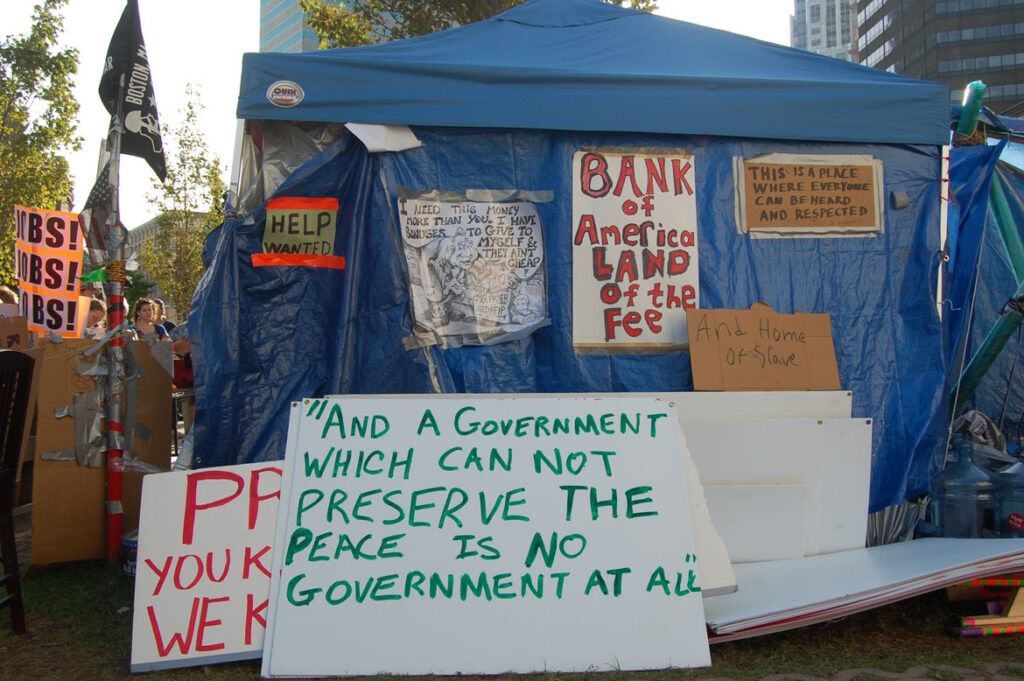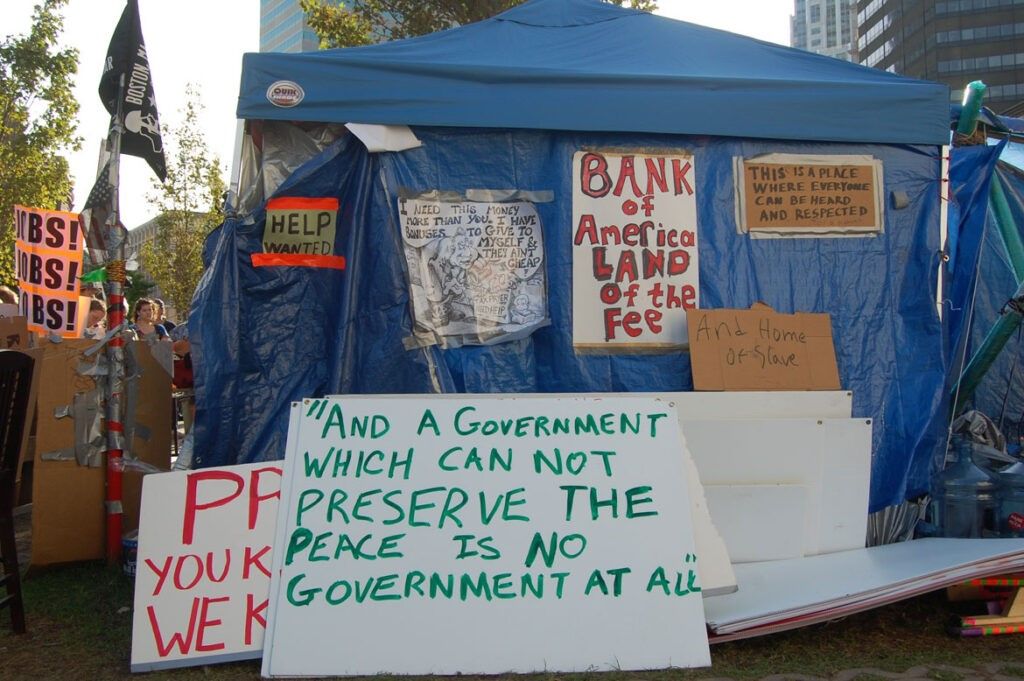Tent City, Autonomous Zones, and Prefigurative Politics in the United States

Tent City, Autonomous Zones, and Prefigurative Politics in the United States
In 1968, activist Mel King led a protest against urban renewal in Boston after the Boston Redevelopment Authority (BRA) demolished an affordable housing unit in the city’s South End. In a renewal scheme emblematic of US 20th century urban development, the BRA had plans to convert the site into a parking lot. On April 25th, Mel King and other activists organized a sit-in at the BRA’s offices to protest the plans, which they followed with a physical occupation of the lot itself the next day. The sit-in at the lot led to the arrest of 28 protestors. The following day, after all protesters had been released, an even larger group of protesters returned to the lot this time erecting tents and self-built shanty structures along with a sign welcoming any interested visitors to “Tent City”. Protestors also set up grills, decorations, and other amenities in Tent City that made the lot a livable and welcoming temporary community. In the three days that followed, Tent City saw between 100-400 protestors occupying the lot at any one time. The protest ended when the police threatened to arrest any protestors who wouldn’t leave, yet at this juncture the protesters agreed that their message had been spread, and their occupation had been sufficient.
The radicality of the Tent City mission was that the protestors called for mixed-race and mixed-income housing in a time when segregation and gentrification laid the bedrock of urban development in America. The protestors' vision was that the previous residents of the demolished building should be able to stay, rather than have their housing converted into lot space while gentrification pushed them out of the neighborhood. After the protest, the activists established the Tent City Committee which proposed that a new development be erected at the site to house occupants of diverse economic and racial backgrounds. The Committee proposed that 25% of the new development should be reserved for those who are public housing eligible, 50% should be for those at the median income of the South End, and the rest could be available to be sold at market rate (King, 1977). This anti-gentrification housing proposal was met with hesitation and pushback given the lack of funding in housing and finance administration at the time, and the BRA’s unspoken unwillingness to support this kind of progressive owner-occupied mixed-housing model. While the lot remained vacant for 20 years, a new development to the Tent City mission arose in 1988 when the lot was finally transformed into an affordable housing development named “Tent City Housing Complex '' which remains to this day.
Prefigurative politics is a term coined by Carl Boggs which describes the political practice of enacting or embodying the ultimate goals of a political movement within the ongoing fight to formally achieve it. The practice additionally implies that the changes a group seeks to realize must be present in the means employed to achieve it, and for this reason many examples of prefigurativism center on non-hierarchical structures and participatory democracy. Participatory praxis also often asserts itself as a testing ground for new ideas and novel concepts. The article “Prefigurative Politics” from Beautiful Trouble states “The goal of a prefigurative intervention is twofold: to offer a compelling glimpse of a possible and better future, and also — slyly or baldly — to point up the poverty of imagination of the world we actually do live in”. Tent City achieved these goals by using protest to prefigure communal and just urban housing 20 years before it was actualized by the city government.
In 2011, Mel King addressed the next generation of prefigurative protestors during the Occupy movements which began on Wall Street and spread to over 600 cities throughout the United States. In a speech King gave addressing movement leaders, he says that the occupy movement protesters are not only occupying space but “occupying minds” (King, 2011). He continues to add “You are deserving, and no change comes to any individual or group until they assert themselves that they are deserving [...] Your message is getting into people's minds and you're saying 'we are deserving" (King, 2011). The legacy of past prefigurative interventions lives on as self-construction finds new relevance in temporary autonomous zones, Reclaim the Streets protests, and other forms of demonstration which center both critical mass and critical connection as means of reappropriating mis-used urban space.
In the summer of 2020, autonomous zones in cities including Seattle, Richmond, Philadelphia, and New York City, concurrently emerged to varying degrees of success as a prefigurative response to continued state sanctioned violence towards Black Americans. Inside Seattle’s Capitol Hill Occupied Protest (CHOP) zone, which surrounded the Seattle Police Department’s East Precinct, some activists lived in tents in defiance of the city’s laws which forbid urban camping. Protestors also constructed metal barricades, traffic barriers, and fencing to block street traffic surrounding the zone in order to create pedestrian-controlled streets.
CHOP also created community gardens honoring victims of police violence. In this way the action was both symbolic and effective—part demonstration, part commune. The CHOP, as all prefigurative praxis is designed to, provoked questions about how this experimental social model can merge with and eclipse the dysfunctional aspects of the prevailing one: Are all autonomous zones protected under the Constitutional right to peaceable assembly? How does the urban setting of such demonstrations affect their political significance? Should permits be required for self-constructed autonomous zones to be erected in public space, or should the people retain the right to self-construct whenever the need arises?
Beyond the CHOP, many movement members envisioned a future for the neighborhood with a defunded police department, community education programs, and housing and support for the homeless, among other changes.
The Tent City protest of 1968 enacted simply and gracefully the ideals of urban living that state-backed urban renewal programs deemed impossible. Self-construction and participatory urbanism at large therefore exemplify this prefigurative spirit which does not await permission for the necessary amenities of shelter and community to be formally granted to the societally marginalized. Instead, prefigurative demonstrations like the Occupy movement and the autonomous zones of 2020 seize their right to revolution by seizing physical space and occupying both the city and the mind.
References
“Activists Erect Tent City in Boston.” Central Artery Project Announced, https://www.massmoments.org/moment-details/activists-erect-tent-city-in-boston.html.
Archives, UMass Boston. “Interview with Mel King about Tent City Site, 1977 August 30.” Vimeo, 7 Aug. 2022, https://vimeo.com/366801658.
blastmagazine. “Mel King Tells Occupy Boston ‘You Have a Right to Revolution.".” YouTube, YouTube, 16 Dec. 2011, https://www.youtube.com/watch?v=SRwKtRCmt6w.
Bush, Evan. “Welcome to the Capitol Hill Autonomous Zone, Where Seattle Protesters Gather without Police.” The Seattle Times, The Seattle Times Company, 12 Aug. 2020, https://www.seattletimes.com/seattle-news/welcome-to-the-capitol-hill-autonomous-zone-where-seattle-protesters-gather-without-police/.
“Prefigurative Politics .” Beautiful Trouble, https://beautifultrouble.org/toolbox/tool/prefigurative-politics/.
Taylor, Chris. “Autonomous Zones like Chaz Have a Long History. We Need More of Them.” Mashable, Mashable, 29 Oct. 2021, https://mashable.com/article/chaz-autonomous-zone-seattle.





